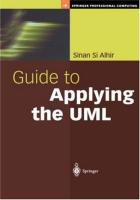Unified Modeling Language [OOMD] BE [Comp & IT]
OOMD with UML and USDP workbook :- DOWNLOADOOMD Manual 2011 :- DOWNLOAD
Object Oriented Modelling and Design is a subject introduced in the 7th semester i.e (BE- sem 2) of Engineering for Computer and IT Engineering curriculum of Pune University. The subject is a compulsory subject for both (Computer and IT). This subject is really an important subject for a software engineer to model visual designs of a particular project.
To design these visual models we need to have a commonly agreed and accepted methodology or a simple protocol. Here comes UML into the picture. UML i.e. Unified Modelling Language is a Language which helps one to design visual models of a system in different views. UML is not a programming language and hence contains no coding stuff. It contains only diagrams which helps a designer develop a visual model of the system . There are many different types of diagrams available under the UML, which helps a user design different view models of a system. Some of them are : Class Diagrams , Activity Diagrams, Sequence Diagrams etc.
UML is a major part of OOMD according to the syllabus.
The syllabus for Computer and IT Engineering is almost the same.
Syllabus for Computer Engineering -
UNIT I
What is modeling? Object Oriented Thinking, History of UML Building Blocks of UML, OCL: what & why, expression syntax Introduction to OMG standards MDA, XMI, UML 2.0. RUP emphasizing Inception, Elaboration, Construction, Transition Phases. 4+1 Architecture, UML Meta model, Extensibility mechanisms like stereotypes, tagged values, constraints and profiles. MDA, XMI, UML 2.0
UNIT II
Requirements modeling: Gathering & classifying requirements, Requirements metamodel, Requirements workflow Detail Use case specifications, Use cases & RUP, Advanced use-case modeling, Activity diagrams. Review and interactive discussions on home tutorials, classroom tutorials and students presentation. Review of recent advances in the subject.
Use-case modeling (actors, use cases, relationships),
UNIT III
Package diagrams, Basic Class diagrams, Need, purpose & application of UML diagrams, CRC method, Advanced Class diagrams, Object diagrams, Composite structure diagrams, Illustrations of Package diagrams, Basic Class diagrams, Object diagrams, Composite structure diagrams
UNIT IV
Need, purpose & application of sequence diagrams, Communication diagrams, Interaction Overview diagrams, Timing Diagram, State Machine diagrams,
UNIT V
Component Diagram, Interfaces and ports, Deployment diagrams, Need, purpose & application of above diagrams two, three tier architecture
UNIT VI
Concept of Forward Engineering and Reverse Engineering of UML Diagrams, Design patterns, Forward Engineering and Reverse Engineering of all diagrams of UML 2.0. UML diagrams for following design patterns: Singleton, Abstract factory, Façade, proxy, Iterator, Observer. Design pattern examples
Syllabus for IT Engineering
Unit I
Introduction to OMG Standards: MDA, MOF, XMI, CORBA, UML 2.0. UML History, UML 2.0 New Features. Introduction to UML, UML Meta Model Conceptual Model of UML, Extensibility mechanisms like stereotypes, tagged values, constraints and profiles. OCL. Overview of all diagrams in UML 2.0.
Unit II
Rational Unified Process emphasizing Inception, Elaboration, Construction, Transition Phases. 4+1 View architecture, Architectural approaches: Use case Centric, Architecture driven, Iterative approach. OO Concepts Review, Overview of Use Case Diagram.
Unit III
CRC method, Class diagrams, Classes and Relationships, Advanced Classes, Advanced relationships generalization, association with its adornments, dependencies, realization. Interfaces and ports. Packages & diagrams. Instances, Active Objects & object diagram, Composite structure diagrams including composite structures, collaborations
Unit IV
Interaction diagrams. Interaction Overview diagrams including interactions, signals, exceptions, regions, partitions, Sequence diagrams, Communication diagrams.
Unit V
Activity diagrams, Activities, sub activities, Events &signals, exceptions, partitions, regions. State Machine diagrams, States, encapsulation of states, transitions, submachine, state Generalization. Timing diagrams. Processes & threads, time & space, Modeling reactive object.
Unit VI
Support for modeling Architecture in UML. Component diagrams, Deployment diagrams. Collaborations. Pattern & framework. Applications of UML in embedded systems, Web applications, commercial applications.
Download Books :
UML Distilled
SAMS Teach Yourself UML in 24 Hours
Guide to Applying the UML
Developing Software using with UML
UML 2.0
--------------------------
Video Lectures on UML
Introduction to UML
Creating UML use case diagrams
UML Class Diagram
UML Use Case Diagrams
UML Sequence Diagram
UML Interfaces
Reverse Engineering
Class Diagrams - Associations, Role, Multiplicity
Activity Diagrams & Sub Activties
=========================





No comments:
Post a Comment